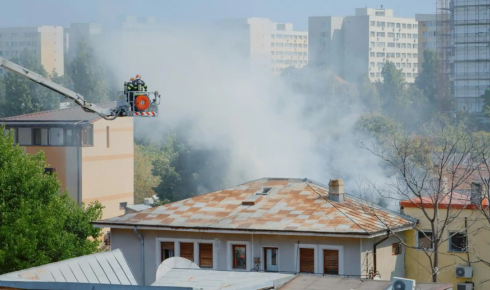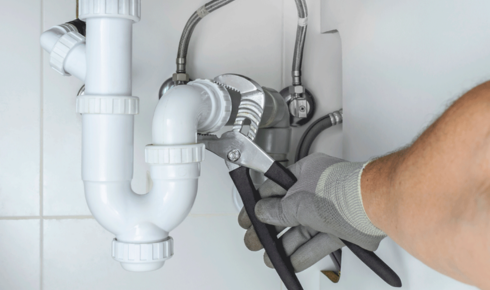Living in Houston means dealing with a climate that can be described as anything but mild. The city is known for its sweltering heat, intense humidity, heavy rains, and the occasional winter chill. While you may be used to how the weather affects your daily life, have you ever considered what it might be doing to your chimney? Chimneys are often an overlooked part of home maintenance, but in a place like Houston, they can suffer significant wear and tear due to the unpredictable and often harsh climate.
Understanding the connection between weather and chimney health is the first step toward protecting your home and avoiding costly repairs. Let’s dive deep into how each season in Houston can affect your chimney and what signs you should keep an eye out for.
The Impact of Heat and Humidity on Chimney Structures
Houston’s summers are legendary. The combination of extreme heat and persistent humidity doesn’t just make for uncomfortable days—it can also compromise the structural integrity of your chimney. Bricks and mortar, the primary materials used in most chimneys, are porous by nature. This means they absorb moisture, especially during prolonged periods of high humidity.
Over time, that moisture causes the mortar to weaken, crack, or crumble. Even though it might not be visible from the ground, moisture can penetrate deep into the masonry, eventually leading to internal damage. This weakens the entire chimney structure, putting it at risk for leaning, cracking, or even partial collapse.
Additionally, the constant cycle of heating during the day and cooling at night causes expansion and contraction in the masonry. This thermal movement, when repeated over months and years, leads to gradual but undeniable deterioration.
How Rainstorms and Moisture Lead to Internal Damage
Houston experiences heavy rainstorms year-round, and flash floods are not uncommon. While chimneys are designed to stand strong against the elements, water is their worst enemy.
If your chimney doesn’t have a properly installed or functioning cap and crown, rainwater can easily find its way inside. Once inside, moisture can lead to rusted damper assemblies, deteriorated fireboxes, and even mold growth. Moisture trapped within chimney walls can freeze during rare Houston cold snaps, leading to expansion that cracks bricks from the inside out.
Rainwater also promotes efflorescence—a white, powdery substance that forms on the exterior of bricks. While it might seem cosmetic, it’s actually a red flag that too much water is seeping into the chimney.
Sudden Cold Snaps and Their Surprising Effects
Houston isn’t known for frigid winters, but when the temperature drops unexpectedly, the change can wreak havoc on your chimney. When water that’s already seeped into your chimney’s masonry freezes, it expands. This freeze-thaw cycle causes bricks and mortar joints to crack or break apart. Even a single cold night can trigger damage if your chimney is already saturated from previous rain or humidity.
What starts as a small crack can quickly spread. Water then finds its way into the new gaps, freezes again the next cold night, and repeats the cycle. Before you know it, your chimney could have serious structural problems that go far beyond surface appearance.
Wind and Storm Debris: The Silent Threat
Strong winds, especially during hurricane season, pose another risk to your chimney’s health. Flying debris like branches, roofing materials, or even projectiles stirred up by storms can strike your chimney and cause external damage. While a crack or chip might seem minor at first glance, it opens the door for water intrusion and internal decay.
High winds can also loosen your chimney cap or even detach it entirely. Without that protective barrier, water, leaves, and even small animals can enter your chimney. And once inside, they can create clogs, encourage mold, or even start blockages that compromise airflow and safety.
Poor Ventilation from Humid Weather
Let’s not forget the internal impact of Houston’s weather. Persistent humidity doesn’t only damage bricks and mortar—it also affects air circulation. Your chimney relies on a draft system to vent smoke and gases safely out of your home. In humid conditions, air can become stagnant. This weakens the draft, leading to poor combustion, smoky interiors, and the accumulation of creosote—a highly flammable residue.
Without regular inspections and cleanings, creosote buildup can reach dangerous levels. It’s one of the leading causes of chimney fires, and humid conditions only accelerate its formation.
Signs of Weather-Related Chimney Damage in Houston
Recognizing early signs of chimney damage can help you avoid expensive repairs down the line. Houston homeowners should keep an eye out for subtle but important indicators, such as white or gray stains on bricks (known as efflorescence), cracked or missing mortar joints, and musty odors coming from the fireplace. Rusted or warped damper components are also a red flag, as are cracks in the chimney crown or firebox. If bricks feel soft or start to crumble when touched, that’s a serious sign of deterioration. Stains appearing on walls or ceilings near the chimney may point to internal water damage. If you notice any of these issues, it’s time to bring in a professional for a thorough inspection.
Proactive Maintenance for Long-Term Chimney Health
Prevention is always better (and cheaper) than repair. Especially in a city like Houston, where weather conditions can change rapidly, regular chimney maintenance should be part of your home care routine. Getting your chimney inspected at least once a year—preferably before the rainy season—can help identify weak spots early.
A professional sweep can remove creosote buildup and check for signs of structural damage. Installing a quality chimney cap and waterproofing the exterior masonry can go a long way toward protecting your chimney from Houston’s unpredictable elements.
And if you’re already noticing symptoms of deterioration, it might be time to consider chimney repair in Houston to keep things from getting worse.
Protecting Your Home Starts with Awareness
Your chimney might seem like a solid, immovable part of your home, but in a place like Houston, even brick and mortar need some TLC. From humid summers to surprise cold fronts, the weather throws a lot at your chimney year-round. But with a bit of awareness and proactive care, you can protect your home, your safety, and your wallet.
If this blog helped shed some light on how the weather affects your chimney, stick around! We’ll be posting more tips, homeowner guides, and seasonal checklists to help you stay ahead. Whether you’re facing down summer heat or preparing for another rainy season, we’re here to help keep your home safe and warm.




